I've managed to get it to work without a dynamic key. By following this tutorial with this json:
Currently, I'm using Retrofit and trying to get a response with dynamic keys. However, the response body is always null:
This is the response format:
{
"dynamic1": {
"cityID": "id1",
"priceRange": 15
},
"dynamic2": {
"cityID": "id2",
"priceRange": 15
}
}
In APIUtils.java
public static CityService getCitiesService() {
return RetrofitClient.getClient(BASE_URL).create(CityService.class);
}
In CityService.java
public interface CityService {
@GET("/SAGetStrollAwayCity")
Call<CityResponse> getCities();
@GET("/SAGetStrollAwayCity")
Call<CityResponse> getCities(@Query("tagged") String tags);
}
In CityResponse.java:
public class CityResponse {
/*@SerializedName("results")
@Expose*/ // is this the correct way?
private Map<String, CityDetails> city = new HashMap<>();
public Map<String, CityDetails> getCity() {
return city;
}
public void setCity(Map<String, CityDetails> elemDetails) {
this.city = elemDetails;
}
}
In CityDetails.java
public class CityDetails {
@SerializedName("cityID")
@Expose
private String cityID;
@SerializedName("priceRange")
@Expose
private Integer priceRange;
public String getCityID() {
return cityID;
}
public void setCityID(String cityID) {
this.cityID = cityID;
}
public Integer getPriceRange() {
return priceRange;
}
public void setPriceRange(Integer priceRange) {
this.priceRange = priceRange;
}
}
In HomeFragment.java
public View onCreateView(@NonNull LayoutInflater inflater, @Nullable ViewGroup container, @Nullable Bundle savedInstanceState) {
View rootView = inflater.inflate(R.layout.fragment_home, null);
// 2nd api call
mServiceCity = ApiUtils.getCitiesService();
loadCities();
return rootView;
}
public void loadCities() {
mServiceCity.getCities().enqueue(new Callback<CityResponse>() {
@Override
public void onResponse(Call<CityResponse> call, Response<CityResponse> response) {
// !!! WHY IS THE RESPONSE BODY EMPTY???
if(response.isSuccessful()) {
// adapter.updateCities(response.body().getCity());
Log.d("MainActivity", "posts loaded from API"+ response.body().getCity());
}else {
int statusCode = response.code();
// handle request errors depending on status code
}
}
@Override
public void onFailure(Call<CityResponse> call, Throwable t) {
//showErrorMessage();
Log.d("MainActivity", "error loading from API");
}
});
}
